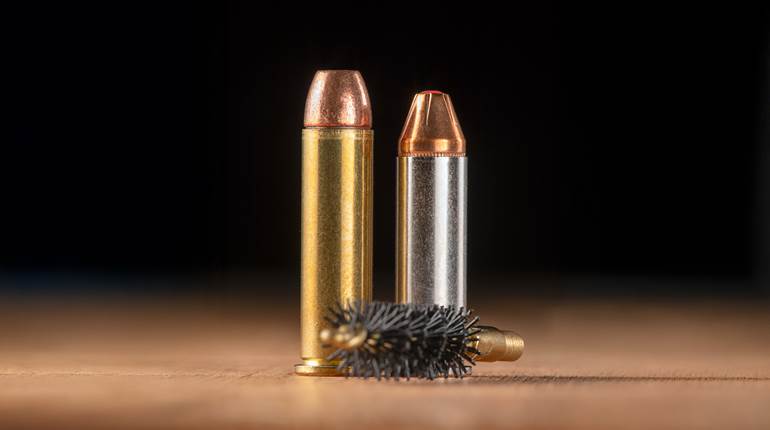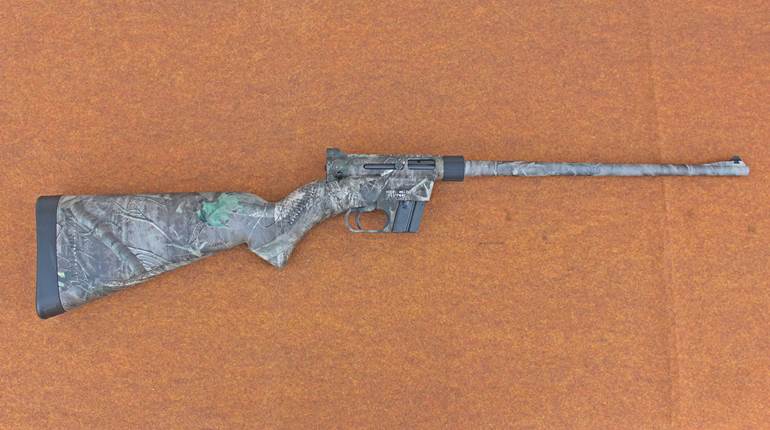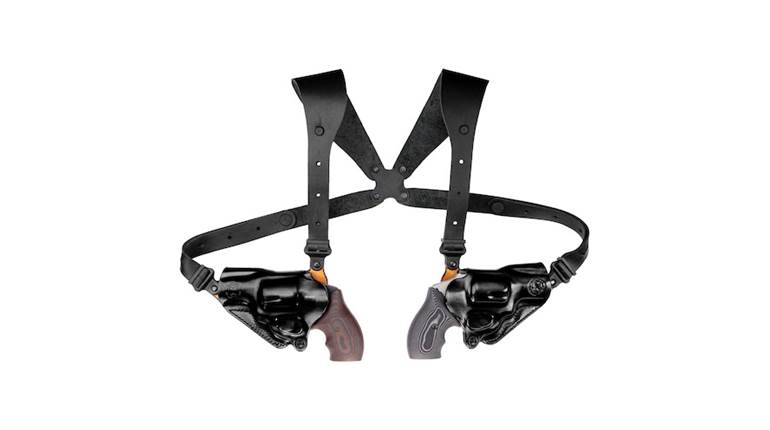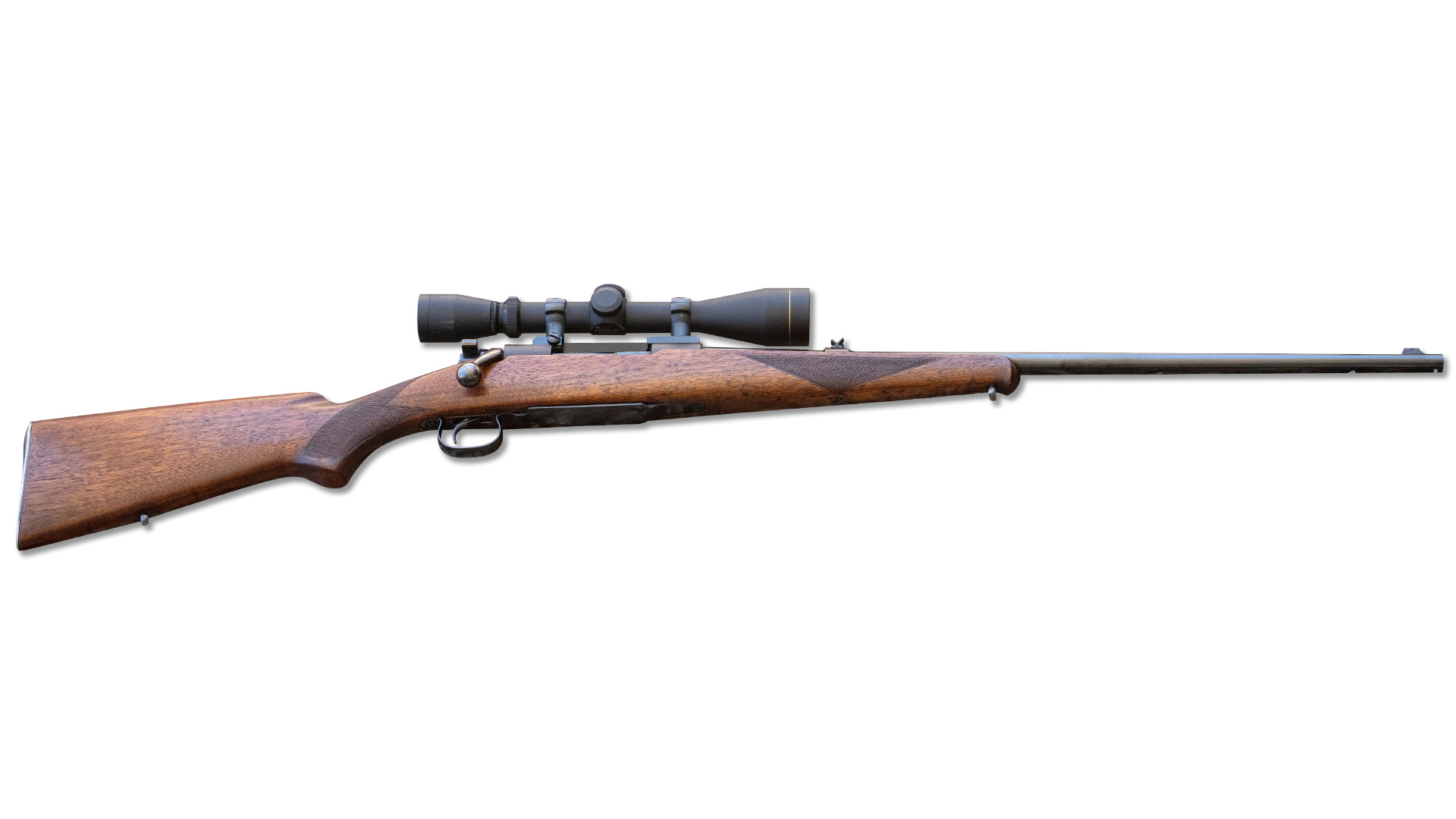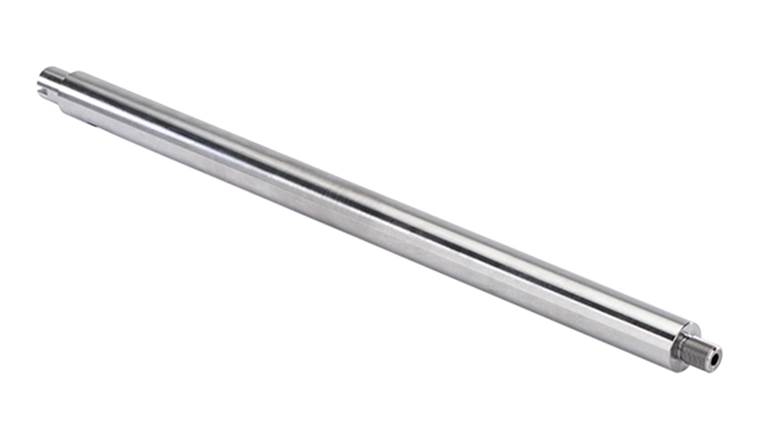
Handguns chambered to fire the .410 shotshell provide shooters with a unique set of advantages and challenges. These handguns offer the flexibility of firing a variety of projectiles such as .45-caliber bullets, slugs, birdshot, buckshot and .410 specialty rounds. However, being able to fire multiple projectiles is a mixed blessing. The ability to fire .410 shells comes at the sacrifice of long-range accuracy. Since many shooters have chosen to purchase .410 handguns for recreation and self-defense, AmericanRifleman.org decided to test two of the best-known revolvers on the market—the Judge and the Hammer—to see how they compare.
The Taurus Judge
Handguns chambered to fire .410 shells were available before the Judge arrived on the scene, but none of them were as commercially successful. The Judge seems to have just the right balance of price, form and features to inspire the handgun buying public. Unlike some of its unsuccessful predecessors, such as the chunky Thunder 5, the Judge follows the same clean, lean design that shooters prefer in double-action revolvers. Taurus also had the foresight to offer its revolvers in a variety of finishes and barrel lengths. In fact, the success of the Judge has inspired ammunition manufacturers to design .410 shells specifically for handguns.
The stainless steel model I tested came with a 6.5-inch barrel, a fiber-optic front sight, the recoil-absorbing Ribber Grip, and weighed in at 32 ounces. The double-action trigger pull was smooth and consistent, while the single-action trigger was crisp. Though the revolver has a fixed rear-notch sight, the bright fiber-optic front sight made it easy to stay on target. The revolver exhibited a level of felt recoil that should be expected in a lightweight big-bore handgun, but it was comfortable to shoot and easy to control. Taurus offers this revolver in a wide variety of configurations, including models with factory barrel porting and light-weight alloys.
The Magnum Research BFR
The BFR (Biggest Finest Revolver) is the strongest .45 Colt/.410 revolver currently available on the market. Built using the same materials and processes as BFRs chambered in much more potent rounds, such as the .500 S&W Magnum and .450 Marlin, this revolver can easily digest any factory .45 Colt ammunition you would care to feed it. This includes “+P” and "+P+" rated ammunition like CORBON's Hunter series and Buffalo Bore's Heavy .45 Colt +P loadings. So, with three ammunition types on hand, the revolver can be loaded for short-range snake, dangerous animal and self-defense, all at the same time.
The BFR is a stainless-steel single-action revolver with a 5.5-inch barrel, rubber grips, adjustable target sights, weighing in at 4.3 pounds. Though nicknamed “The Hammer,” this revolver is anything but when it comes to felt recoil. The combination of the extra weight and its single-action design make this BFR quite comfortable to shoot, even with heavy .45 Colt loads. The single-action trigger broke at just over 3 pounds, with no creep.
Opening the loading gate allows the cylinder to spin freely to either the right or the left. This is helpful when setting a specific round to fire first. The overall fit and finish of this revolver clearly demonstrates the dedication of Magnum Research to building high-quality revolvers. They also offer customers their Precision Shop, which provides a variety of custom options.
.410 Tests
Testing the performance of .410 shotshells from handguns has proved to be problematic in the past. The traditional tests for handgun performance focus on the behavior of single projectiles rather than shot pellets. Averaging the size of five, 5-shot groups is not possible since several projectiles on different trajectories are launched with each pull of the trigger. Short-range, rapid-fire drills will, as most .410 handgun owners already know, produce copious amounts of confetti, but not a readable target.
To address this problem, I developed a performance test that blended traditional handgun target tests with shotgun pattern tests. The goal was to use handgun targets to track how quickly the shot pellets are spreading. Instead of firing several shells into a single target, the test involved firing single shells into several targets, with each target set at a greater distance from the muzzle. For this article, targets were shotat 6, 10, 15, and 20 foot intervalswith two of the most popular .410 defensive loads on the market—Federal’s .410 Handgun 4-Pellet 000 Buckshot and Winchester’s PDX-1.
Using the following table, you can see how each shell performed from both revolvers. Because the PDX-1 has two kinds of payload, their spread rates are tracked separately. The revolvers produced tight, useful groups with both .410 defense loads.
.45 Colt Tests
I used the standard average of five, 5-shot groups fired from 25 yards to test for accuracy in these revolvers, using Winchester 185-grain Silver Tip Hollow Points. While newer bullet designs have arrived on the market, the Silver Tip remains a popular choice for self-defense. I fired all shots from a benchrest position, using the single-action trigger for the Taurus Judge.
Both revolvers shot close to the point-of-aim at 15 yards. However, both also showed a tendency to shoot high at the 25-yard mark. Aiming about 3 inches below the bullseye seemed to solve this problem, but did not resolve the relatively large groups the revolvers produced. The BFR Hammer averaged 5.25-inch groups, with the best group being 3.5 inches. The Taurus Judge produced an average group size of 5.3 inches, also with a best group of 3.5 inches. Critics of the Judge have blamed this less-than-predictable level of accuracy with .45 Colt loads on some unidentified lack of quality control. However, since I've had the opportunity to test a variety of .45 Colt/.410 handguns, and the problem occurs across different brands, I think there is a more likely explanation.
If you measure the cylinder of a dedicated .45 Colt revolver, such as a Ruger Blackhawk, you'll find the distance from the .45 Colt cartridge case opening to the cylinder gap is relatively short. With the Blackhawk, it’s about 7/16 of an inch. In order to build a revolver cylinder capable of accommodating both .45 Colt rounds and the much longer .410 shotshell, the distance the .45 Colt bullet travels in the unrifled cylinder is significantly increased.
Instead of traveling just 7/16 of an inch, the bullet now has to travel anywhere from 1-5/16 to 1-3/4 inches before it reaches the cylinder gap. This allows plenty of room for a bullet to wander or start to wobble. Does this make .45 Colt/.410 revolvers bad guns? No more so than a S&W J-frame is a bad gun because it can’t shoot accurately out to a thousand yards, or a Barrett .50 BMG rifle is a bad gun because it won’t fit neatly into a handbag. It’s a matter of compromise. Shooters gain the flexibility of .410 shotshells at the sacrifice of long-distance accuracy with .45 Colt rounds.
The BFR offers a heavy duty, single-action design that is comfortable to shoot and I’m confident that it will still be working smoothly when I give it to my grandkids, which is a long way down the road. The Judge offers the light weight and quick handling that makes compact double-action revolvers so handy to have around. In other words, it’s the usual apples and oranges debate that crops up in any single-action vs. double-action revolver comparison.
Folks who are looking to buy a .45 Colt/.410 revolver need to do so with the right perspective in mind. Critics of these guns have been frustrated because they wanted a .45 Colt revolver that also happens to shoot .410 shells. Because of the engineering changes required to make this kind of gun function, the BFR, Taurus Judge, and guns like them, should be seen as just the opposite. They are effective short-range .410 revolvers, which also happen to fire .45 Colt loads.













